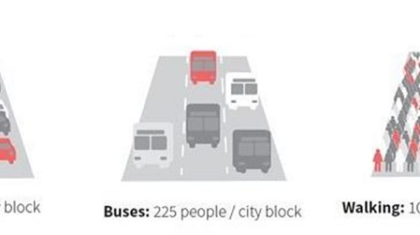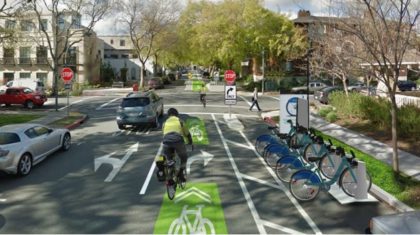
By Cynthia Hoyle, Planner, Alta Planning + Design
When the American Planning Association agreed to publish the Planning Advisory Service (PAS) report on Traffic Calming in 1995 it was considered a very radical concept. I took graduate coursework in transportation engineering and planning in the mid-1980’s and streets were very emphatically to be designed to move cars as fast as possible from point A to B. Pedestrians were something to be kept off the streets and bicyclists were not even mentioned in the textbooks or classes.
It was when I had the opportunity to live in Bayreuth, Germany in 1989 I came across the Australian report Traffic Calming. Professor Rolf Monheim, faculty at the University of Bayreuth who was an expert in pedestrianization and creating city centers, gave me a copy when he invited me to have coffee at his home. I went with my baby daughter (who is now 27) in tow. I thought the report needed to be shared in the U.S. to make our cities safe and more livable.

Knowing that the report would need examples from the US in order to gain any traction, I searched for places that had implemented traffic calming programs. In the early 1990’s only Berkley, Seattle, and Portland had done much work to calm traffic. I pulled heavily from the groundbreaking work that Donald Appleyard had done in his book Livable Streets and added a chapter on necessity for public engagement in order for traffic calming programs to succeed. The opening section of Traffic Calming reads in part: “Traffic calming promises to be an important tool for improving the quality of life in American cities…This report examines the myths of traditional traffic planning and how such planning must change to provide safer streets.”

The PAS report garnered a lot of attention, both positive and negative. To suggest streets should be designed for everyone, including pedestrian and cyclists, was considered naive if not dangerous by mainstream engineers and most planners. I faced some hostile audiences. Thankfully, things have changed since then and now communities all across the country want to reclaim their streets. It is a beautiful thing to watch unfold!


